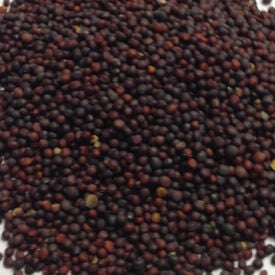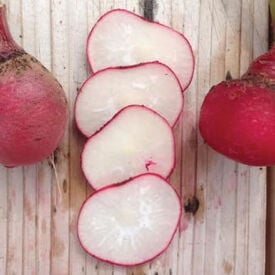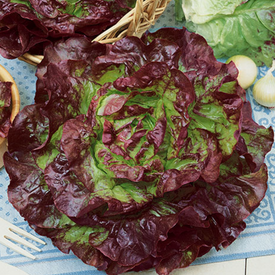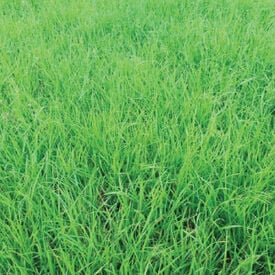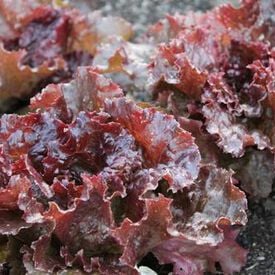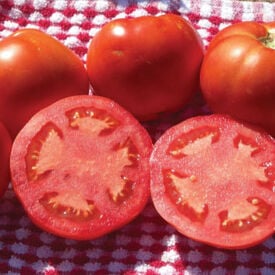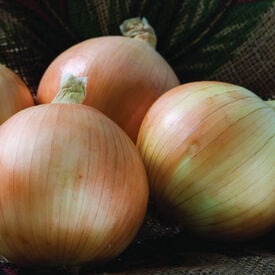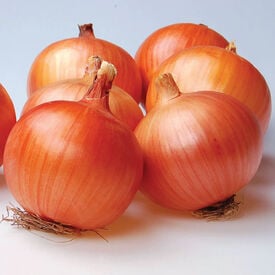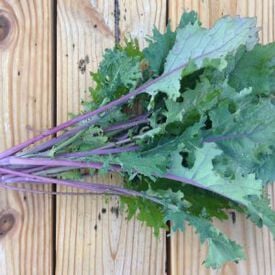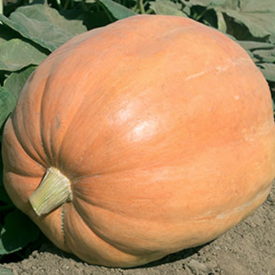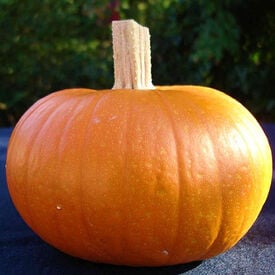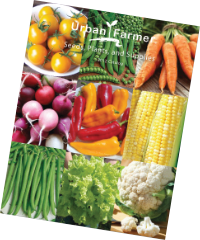The Barkant Forage Turnip is an improved, early maturing, diploid turnip variety with a large purple tankard shaped bulb. Turnips have a high leaf to stem ratio and and provide very high concentrations of protein, sugar content and leaf yields. This turnip is ideally suited for grazing and it is common to obtain 4-6 tons of dry matter per acre of this high-energy feed. Uses: Chicken forage, deer attractant, forage
The Cherry Belle Radish is the earliest maturing, garden standard radish. This variety is a 1949 All-American Winner and there is no wonder why. This radish retains its fine eating quality all season. The Cherry Belle is a round, smooth, scarlet beauty. This radish is 3/4" inches across with a crisp, white flesh that is ideal for garnishes or use in salads.
Carmona Red is a favorite among many market growers! This lettuce variety produces big, bright red heads with lime green hearts. The Carmona Red has a nice silky texture and is very disease resistance.
The Annual Ryegrass is a very fast growing grass that makes for a great cover crop as its fibrous roots prevent soil erosion and build organic matter! Plant this grass early fall to late fall, or early to mid-spring and can germinate in cool weather. The Annual Ryegrass established protective cover quickly and over seeds well at higher rates. This grass can scavenge as much as 200 pounds of nitrogen per acre. When used as a spring cover crop, this Annual Ryegrass should be killed before reaching seed formation stage. Ryegrass (Lolium sp.) Uses: Erosion Control, Green Manure, Nitrogen Scavenger, No Till, Organic Matter (Biomass), Weed Suppression
The Red Sails Lettuce is a full rosette type that produces radiant bronze-red, ruffled and deeply lobed leaves that have a mild bitter-free flavor that pairs very well in salads. This slow-bolting lettuce is ready to cut early and holds its quality very well. Red Sails has six times the vitamin A and three times the vitamin C as other supermarket lettuces. This variety thrives in cool weather, but can also grow well in the spring, summer or fall.
The Floradade Tomato is a delicious, bright red variety that has a great ability to withstand heat and produce high yields! This variety was introduced by the University of Florida in 1976. This tomato plant produces smooth, 5-7 ounces sized tomatoes with slightly deep globes that have red with green shoulders.
Scout is an early to main season intermediate variety and can make a good transition from intermediate to long days. It is a consistent yielder and a uniform producer of jumbo and colossal bulbs and holds up well to mechanical harvest.
Caliber is a late-season yellow long day for the western United States known for vigor, disease resistance, yield, and storage capabilities. Caliber is a Celebrate hybrid with a healthy plant with solid roots and strong and erect tops that assist in providing thrips tolerance and make applications easier. Caliber has a consistent rich bronze scale in super colossal bulbs with single centers that do very well with a mechanical harvest. Caliber has a reputation for storing very well long term. Disease Ratings: HT to Pink Root and Fusarium, T to Bolting and HT for Thrips
The Red Russian Kale is a very tender, colorful specialty kale for salad mix and bunching. This variety is a special, refined strain. Its stems are purple and leaves are deep gray-green with purple veins. This flat, noncurled, and tooth-edged kale has a wonderful taste. Red Russian matures medium-tall and leaves are tender compared to other kales.
The Mammoth Gold Pumpkin is a smooth, molted pink golden-orange, faintly ribbed and irregular shaped pumpkin. This variety grows to have an 18-24" diameter and weighs in usually between 40-60 lbs. but can get to be over 100 lbs.! The Mammoth Gold's thick pale yellow-orange flesh is edible but coarse, and can be used for pies as well as novelty.
The Jalapeno M Pepper is a high yielding middle of the road hot pepper. This pepper variety has an average hotness level that tastes great in many dishes. Jalapeno M has thick walls with a spicy pungent smell! Typically growing to about 3-5 inches in length, these peppers have a smooth, firm texture and a slightly curved shape. The heat level of Jalapeno M peppers typically ranges from 2,500 to 8,000 Scoville Heat Units, providing a spicy kick that enhances a wide variety of dishes without being overpowering. Originating from Mexico, Jalapeno M peppers are widely used in salsas, sauces, and as toppings for nachos and other dishes. They have a fresh, grassy flavor that complements both cooked and raw preparations. Harvesting usually occurs around 70-80 days after planting, when the peppers are firm and glossy green, although they can also be left to ripen to red for a sweeter taste. These peppers thrive in warm climates and well-drained soil, making them a staple in many home gardens. Their combination of heat, flavor, and versatility has solidified Jalapeno M peppers as a beloved ingredient in kitchens around the world.
Small Sugar pumpkin seeds produce a beloved heirloom variety that has been grown in North America since the 1800s, cherished for its manageable size and excellent eating quality. These compact, vigorous plants yield round, deep orange pumpkins averaging 6–8 inches across and weighing 5–7 pounds, making them easy to handle and perfect for smaller gardens. Known for their fine-grained, sweet, and flavorful flesh, Small Sugar pumpkins are a classic choice for pies, soups, and baking, often referred to as “pie pumpkins.” They mature in about 95–100 days, thrive in well-drained soil with full sun, and are prized not only for their culinary uses but also for their attractive appearance in autumn decorations.
